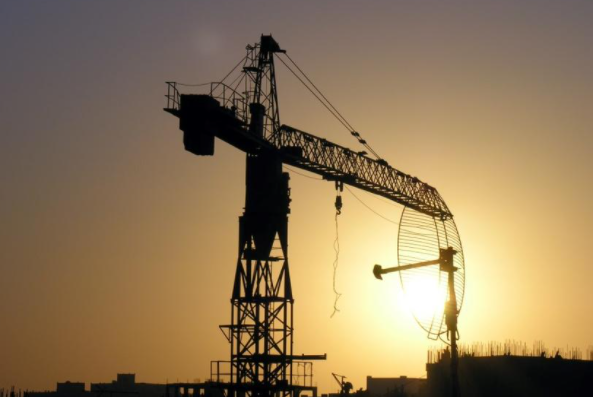The UAE must learn from the UK and take inspiration from the strategies that worked while avoiding those that did not
At the beginning of 2020, few, if any of us, had any idea of the global upheaval that would be wrought by Covid-19, striking at a time when decades of globalisation and cheap travel had made the world seem smaller and more inter-connected than ever before.
2020 has been a particularly challenging year for all stakeholders in the region’s construction industry. That being said, even prior to the impact of the Covid-19 pandemic the industry was suffering from its own challenges.
Several leading international contractors had already either totally withdrawn from or significantly decreased the scope of their operations in the region. Other contractors were bolstered by investment from local sovereign wealth funds.
In 2018, the industry witnessed the collapse of Carillion, attributed to non-payment from Gulf-based employers and in 2019, Drake & Scull International’s UAE business entered discussions with lenders to restructure its debt. When major players in the industry are impacted in this way, it inevitably has an impact on the wider industry.
With main contractors struggling to keep themselves afloat, this necessarily has an impact on their extensive supply chains, many constituents of which will be on ‘pay-when-paid’ terms (as are standard in the region). Accordingly, the impact of all elements of the supply time cannot be under-estimated such that others in the industry will take a significant financial hit, from which they too, may be unable to recover.
The fact is that, in 2020, the construction industry was still suffering from the indirect fall-out of the 2008/09 global financial crisis. Prior to that crisis, construction projects in the region were not always completed on time or on budget, but the final accounts still tended to be resolved without any serious disputes arising.
Contractors were generally working on large profit margins and if, for one reason or another, a project was not as profitable as had been anticipated, there were other profitable projects in the pipeline. Times were good. Then the finance evaporated and an avalanche of arbitrations began.
Once liquidity started to flow back into the market, new projects started to be tendered, but relations between employers and contractors had significantly changed. Employers capitalised on the slowdown in the market by pushing down prices and introducing a variety of onerous contract terms.
Contractors who had remained in the region, desperate to win work to recover from the impact of the recession, took on projects at prices and within timescales they knew were unrealistic, hoping to ‘right the balance’ of the contract by way of claims at the end of the project.
Unfortunately, such a strategy was rarely successful with contractors routinely losing large sums of money on projects. This drove some contractors away and caused many in the supply chain to become de facto insolvent. As the pool of experienced, international contractors shrunk, developers turned more often to Tier 2 and 3 contractors who were less experienced at delivering complex projects within tight timescales. Projects were delayed and disrupted, bonds were called and disputes remained at high levels.
While Covid-19 may be unprecedented, this situation certainly is not. The landscape of the UAE construction industry today, looks very similar to that of the UK construction industry in the early 1990s. In some respects this is good news for the UAE, as it has the option to learn from the UK and take inspiration from the strategies that worked whilst avoiding those that did not.
In 1993, the UK government commissioned Sir Michael Latham to produce a report on how the beleaguered UK construction industry could work more effectively to deliver quality projects while avoiding widespread insolvencies and disputes. This was in itself indicative of how bad the situation had become.
The Conservative government in power at the time was ideologically opposed to interference by government in businesses practices.
However, as Ian Reeves, an industry expert consulted by Latham at the time, observed, “At this time the contractor’s tender price was invariably inadequate to do the job. Hence the contractor either went out of business or spent its life starving its supply chain of cash. Jobs ended up in tears and habitually late. There was a glut of litigation up and down the supply chain.”
The stakeholders in the industry had had every opportunity to resolve these issues themselves, but instead it was getting worse.
The 1994 Latham Report sought to replace the adversarial culture that gripped the industry by encouraging cooperation and teamwork between stakeholders. Crucially, it recommended a legal framework to give this structure some teeth.
Legislation followed, which outlawed pay-when-paid provisions and provided a statutory right to adjudicate disputes so that they could be resolved quickly and cheaply to maintain cash-flow down the supply chain.
The government also committed to becoming a ‘best practice’ client using contracts that fairly allocated risk to the party best-placed to bear it.
The introduction of these measures did not turn building sites into Utopian paradises where developers and contractors hugged out their differences in relation to claims and disputes never arose. But supply chain insolvencies became less of a problem and ‘nightmare’ projects became the exception, not the rule.
While Latham’s reforms did not achieve the 30 percent reduction in project costs by 2000 that Latham had envisaged, it is generally fair to say that few would dispute that the changes the report introduced had a generally positive impact on the industry.
It is clear from the UK experience that a crisis point can be the platform for positive change Covid-19 has drawn attention to the crisis in the region’s construction industry. If this proves a catalyst for the introduction of meaningful changes to the way projects are procured and built, then the region will be able to congratulate itself for finding an opportunity within that crisis.




